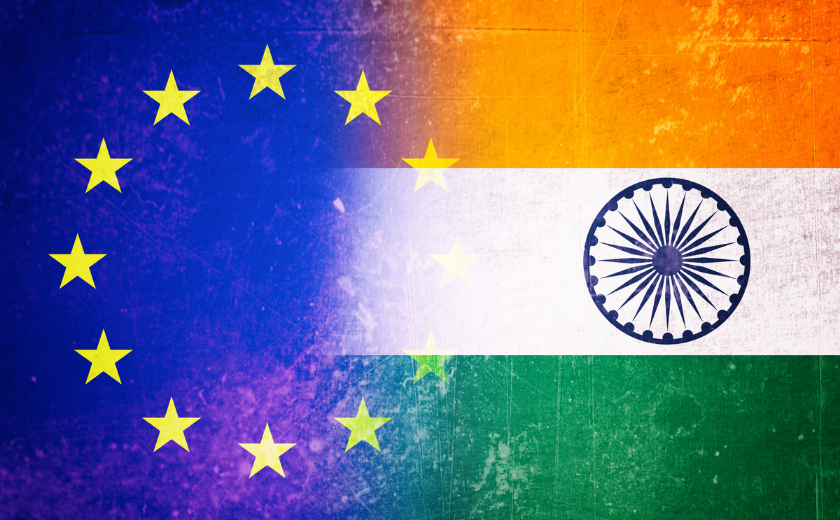India – EU: a partnership

On May 8, a virtual summit between the European Union and India took place in Portugal. It brought a long-awaited breakthrough in economic relations: the unfreezing of negotiations on a trade deal and a decision to start talks on an investment treaty. These agreements – if successful – will cover almost two billion consumers and producers. But the EU and India share not just economic interests: the actual substance is a global strategy that looms largest in their relations. Both parties declare their commitments to defending multilateralism and a multi-polar global order based on the principles of international law, and the central role of the United Nations. In practical terms, it means meeting the challenge for the region and the world posed by a new, assertive policy of China, the world’s second-largest economic power and a dynamically growing supra-regional military force.
Two largest democracies at a crossroads
Cooperation between India and the European Communities dates back to the 1960s. The current relationship between the two largest democracies was defined by two agreements concluded in early 1990s. In 1993, the Joint Political Statement was signed, and in 1994, India and the European Union concluded a cooperation agreement that went beyond the scope of economic relations. A decade later, the relationship between the two parties took the form of a “strategic partnership”, reflecting a community of values and interests both globally and in the region. Since 2000, India and the European Union have held annual summits which provide a platform for the exchange of views and reactions to current bilateral and global strategic challenges.
Last year’s meeting produced a specific document, the “Five-Year Roadmap of the EU-India Strategic Partnership.” It established a High-Level Dialogue Mechanism, extremely important for bilateral trade and investment. Its first meeting took place in early February 2021 and brought talks on resuming trade negotiations which were conducted from 2000 to 2013, when they were suspended.
A simulation carried out by the European Parliament in 2020 showed that the benefits from concluding an FTA, and thus from intensifying trade, could amount to as much as EUR 8.5 billion for both sides. Difficulties in concluding a comprehensive trade agreement have systemic causes that are almost intractable. In addition to India’s protectionist tendencies in terms of tariffs, there is also a problem with better and effective protection of intellectual property (IP) in India, sustainable development and, on the other hand, lack of enthusiasm in Europe to give greater opportunities for Indian companies that wish to provide services in the European Union. The latter issue is also related to the much hoped for easing of visa regime for Indian professionals.
The May 8 virtual meeting between the European Council and the Indian Prime Minister Narendra Modi brought the resumption of the FTA negotiations and the launch of talks on an investment treaty as well as about protection of “Geographical Indications” (GIS), ie traditional food products. It was the first time that the full Council met the head of a foreign government individually. Until now, the presidents of the Council and the Commission spoke on behalf of EU leaders at such ‘summits’.
Economic cooperation: a potential yet to be realized
Economically, the EU ranks first among India’s trading partners, and India is the tenth largest trading partner of the European Union. The trade turnover between the EU and India in 2019 was EUR 80 billion. It represents 11.1% of India’s total trade, but 1.9% of the total EU trade in goods. In addition, the European Union countries are – after the United States – the second largest importer of goods from India. Trade between the two parties has increased by 72% in the last decade. The EU is also India’s largest foreign investor, with the volume of EU Foreign Direct Investments (FDI) reaching EUR 68 billion in 2018 and EUR 75.8 billion in 2019. However, this is not an impressive figure when compared to the EU’s FDI in China at the same time: EUR 175 billion. It is worth noting, however, that there are 6,000 European companies in India, which have directly created 5 million jobs.
Cooperation with India is critical for Europe also because that country is a real powerhouse in the production of medical drugs. The Indian pharmaceutical industry is worth $ 41 billion. India is responsible for as much as a quarter of the world’s medical drugs production, including being the largest supplier of generic drugs (20%) . It satisfies as much as 50% of the global demand for vaccines too. The European Union realized the ramifications of that situation during the Covid-19 pandemic. Disruptions in supply chains resulted also from the fact that 70% of the active ingredients of drugs produced in India come from China. And in the initial period of the pandemic, Chinese producers temporarily shut down or had limited production.
Appreciating the cooperation with India in the field of import and production of medicines and medical equipment, the European Union realized the need to diversify its supply chains. It was clearly stated by the Vice-President of the Commission, Věra Jourová, that as many drugs and medical equipment as possible should be produced in Europe. During the May 8 Summit leaders discussed also the problems of product deliveries in crisis situations – such as the Covid-19 pandemic. A decision was made to set up a group to work on creating the “resilient supply chains“.
Global governance and challenges in the Indo-Pacific
The EU-India summit contributes to the international efforts in terms of reforming both the global economic order (World Trade Organization) and the political governance: a necessary but difficult reform of the UN Security Council, awaited for decades, especially by large developing countries such as India, Brazil and Nigeria.
India is also playing an increasingly important role in the new security architecture emerging in the Indo-Pacific. The country is part of the Quad Security Dialogue, along with the United States, Japan and Australia. From among the EU nations, France is also working closely with that bloc, and the European Union has vital interests in the region because of its importance both for the global trade and for world stability. Both parties: the EU and India have a vital interest in keeping the Indo-Pacific region free and open, based on the principles of international law, as was very strongly emphasized at the May 8 summit. This is all the more important as, especially in the last decade, the status quo in that region has been strongly contested by China’s new, assertive foreign and defense policies. In this context, the EU and India emphasize the ASEM (Asia-Europe Meetings) cooperation format, closer cooperation with ASEAN – the Association of Southeast Asian Nations, and the Indian Initiative for the Indo-Pacific Oceans.
The partnership between Europe and India also means cooperation in the field of new, strategic technologies, which include the currently developed 5G network. The goal of the two great democratic powers in this respect is to develop common security standards and – in practical terms – limiting the use of equipment produced by Chinese companies in building 5G networks. This is the strategic goal of the United States too – Europe’s main ally. In the EU itself, such an attitude towards China results from a shift in relations with that country.
China and the EU have been strategic partners since 2003, but in 2020 the European External Action Service made it clear that “For the EU, China is simultaneously (in different policy areas) a cooperation partner, a negotiation partner, an economic competitor and a systemic rival.” Closer cooperation between Brussels and New Delhi in the field of new technologies is crucial for India itself due to the country’s ambitions to build its position as a global hub for innovation. In the Bloomberg Innovation Index 2021, India ranked 50; China, however, already 16, while six EU countries reached the top 15, with Germany ranked.
The May 8 summit brought also an Indo-European ‘response’ to China’s Belt and Road Initiative (BRI). It is a “Connectivity Partnership” to “promote high-quality infrastructure while taking into account sustainable and crisis-resilient economic growth” – in the EU and India, but also throughout the Indo-Pacific, Central Asia and in Africa, already heavily infiltrated by China. However, unlike BRI, financed largely by Chinese state funds, this project is expected to focus on supporting private infrastructure investment.
Authors: Malgorzata Bonikowska, president, Centre for International Relations and Bruno Surdel, analyst, Centre for International Relations.
[evc_interactive_banner type=”classic” custom_link=”url:https%3A%2F%2Fmastersandrobots.tech%2F|||”]




